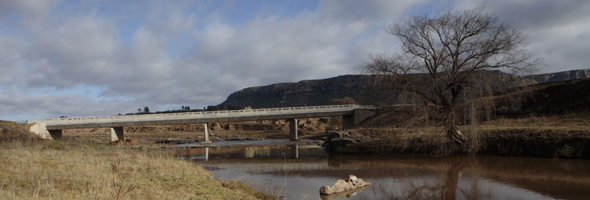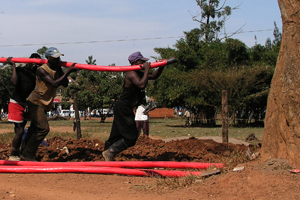Research Brief
The Role of ODA in Infrastructure Financing
It has long been recognized that the creation of an adequate infrastructure is vital for creating sustainable growth and reducing poverty in Africa. However the gap between the investment that is needed and the money currently available is too big to be filled by aid alone. In the WIDER Working Paper 'Aid and Infrastructure Financing: Emerging challenges with a focus on Africa', Tony Addison and P.B. Anand argue that in the future the role of foreign aid must play a greater role in facilitating the creation of institutions which help increase infrastructure funding from other sources.

Aid and Infrastructure
Africa is estimated to need around a $93 billion investment in infrastructure annually. Overseas Development Assistance (ODA) totals around $61 billion, however this figure includes all funds, not only those directed at infrastructure investment. A further $30 billion investment comes from domestic sources but even with this it is clear that there is a significant gap between the investment needed and the resources available from traditional sources.
Typically ODA has been seen as serving the function of filling this gap. Under such a view, ODA designed to increase investment in infrastructure would simply be used to top up the money already being spent by the recipient government. Addison and Anand point out that if aid plays this role, infrastructure in Africa can never be funded at the needed level. The gap is simply too big. They argue that this realization should lead us to consider a new role for aid. The aim of development aid should not only be to attempt to fill gaps in the budgets of recipient countries, but should rather be used to help increase infrastructure funding from other sources.
Other Sources of Infrastructure Funding
Private flows of capital to Africa already exceed the amounts received in aid from traditional donors and from development banks. Infrastructure funds, sovereign wealth funds, and private equity investors all finance infrastructure projects to some extent. Addison and Anand point out that there is also room for an increase in investment from domestic sources, both public and private. At the same time China, and other BRIC countries, are increasingly investing in African infrastructure. The question then becomes one of how then can funding from traditional donors be used to increase both the levels, and the effectiveness, of the investment for infrastructure received from these sources?
Sovereign wealth funds are generally held by natural resource rich countries, and are a surplus of funds used for overseas investment. This investment is not predominately aimed at infrastructure projects, however the pool of money available is large, estimated to be around $4,772 billion globally. If just a small portion of this was invested in infrastructure that would represent a significant increase.
Infrastructure funds aim to supply their investors with a steady source of income, and thus focus mainly on core sectors such as transport utilities. For the same reason they are also more likely to focus on the mature markets of Western Europe, North America and Australia. However once again, the amounts involved are large and estimated to be around $1.79 trillion.
As with SWFs and IFs, private equity investment is likely to be attracted to the most profitable sectors and regions. Thus the main barrier preventing Africa from being considered a profitable region to invest in is the sovereign and political risk associated with the area. Addison and Anand argue that ODA can play a number of roles in mitigating these risks, and thereby help attract more investment.

Most obviously ODA can help foster economic growth. A higher growth rate is clearly attractive to potential investors, but is also likely to lead to an increase in political stability, and reduce the likelihood of conflicts. Furthermore ODA can be used to strengthen domestic institutions and provide them with the capacity needed to effectively attract and absorb investment.
Addison and Anand suggest that ODA can also play a useful role in attracting investment to Africa in cases where political instability is still an issue as there are many other bureaucratic and logistical hurdles investors have to overcome. These include a lack of insurance mechanisms, liquidity problems and a lack of exchange reserves. Carefully targeted ODA could play a role in reducing the severity of these issues. Furthermore ODA could help encourage investment by promoting information sharing between universities, research institutions and the private sector. Investors who have access to information they can trust are far more likely to invest than those who lack such information.
Addison and Anand argue that the key to making China’s and other BRIC countries’ role in Africa more effective is to increase cooperation and information sharing that goes on between new investors and the traditional donors. Currently there is much suspicion between traditional aid donors and China, however funding from both is essential if Africa's infrastructure needs are to be met. Improved coordination would allow the two sides to fund complimentary projects, and reduce the inefficiencies associated with disparate and scattered investment priorities. Greater information sharing between all involved parties on the other hand would enable greater competition between China and traditional donors, and allow accurate assessments of the success of different development projects.
The authors conclude that while ODA cannot provide the infrastructure funding that Africa needs, it can certainly play a role in helping Africa attract such funding from other sources. This realization necessitates a shift in the way development policy makers think about infrastructure funding. While in some cases direct financing may be necessary, in many more ODA should be used to create favourable investment institutions and foster cooperation and competition between the various development finance institutions.
 Join the network
Join the network